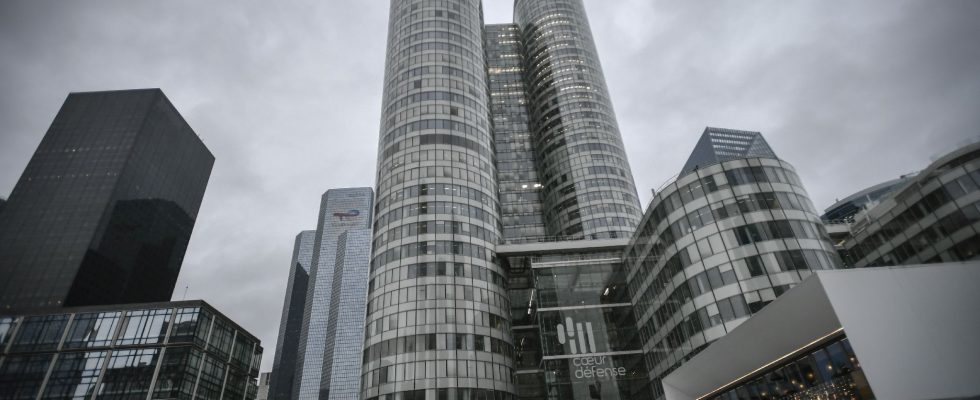Would our productivity be better in a chalet? No need to move to Tyrol to try the experience, the wooden offices are taking up residence in the Paris region. Among the spearheads of this new trend, the developer WO2 and its 350,000 square meters delivered or under construction in Ile-de-France. Its Marcadet Belvédère project, 31,000 square meters north of the 18th arrondissement, will offer a breathtaking view of the Sacré-Cœur in 2024. Relying on a pre-existing concrete base to create five levels of cross-laminated solid wood, the whole will draw 80% of its energy from geothermal energy. In total, a carbon footprint halved compared to a new building made from traditional materials. In Nanterre, Arboretum is also looking for its future occupants. A 125,000 square meter wooden campus, efficient in energy, CO2 and water. The smell of spruce as a bonus. “Studies prove it: in wooden offices, blood pressure is lower, stress is reduced and we observe a positive effect on concentration,” says Guillaume Poitrinal, co-founder of WO2. Wood was not taught in engineering schools, more accustomed to concrete. This is changing.” Guillaume Poitrinal, too, has changed, he who managed the Unibail-Rodamco property company for eight years. “At the time, I was focused on performance and the number of square meters per employee.” Today, the former boss of the CAC 40 talks about a green roof and seasonal products in the canteen.
Its bifurcation illustrates the revolutions in the sector, shaken up by environmental requirements – buildings emit nearly a quarter of French greenhouse gases – but also by new uses. Landlords wonder how to attract tenants, and tenants, their employees. “The more virtuous the building, the more likely we are to rent quickly, to companies that will stay for a long time. For these employers, it is also an argument for recruiting talent,” says Franck Petel, holder of the real estate and sustainable development of Essec, which observes among its students an “extreme sensitivity to pleasant and environmentally friendly offices”.
Good coffee and showers
Users are even willing to pay more to afford virtuous premises – the “green” premium on rents exceeds 20% in Europe -, with concerns that are not limited to energy savings. The deputy general director of BNP Paribas Real Estate Transaction, Eric Siesse, sees labels emerging such as Osmoz, around well-being at work, Biodivercity, for better consideration of nature, or ActiveScore, which promotes soft mobility. “To bring employees back to the office, you need good coffee and quality showers: young people who come by bike are keen on this,” says Zsolt Kohalmi, real estate specialist at the Swiss bank Pictet. “The success of teleworking is partly due to the fact that office buildings were ugly, built with polluting materials, adds Guillaume Poitrinal. The existing stock in Ile-de-France is obsolete. The rental market is suffering because the supply no longer corresponds to demand.”
During the first nine months of 2023, 1.3 million square meters of office space were allocated in the region, a figure down 12% year-on-year, despite recent catch-up. “We believe that in 2023, take-up will be around 1.85 million square meters in Ile-de-France, compared to 2.3 million before the health crisis, with a more marked decline for large areas “, anticipates Eric Siesse. Enough to divert investors, already chilled by the cost of credit: less than 4 billion euros of office acquisitions in Ile-de-France were recorded between January and September, i.e. half of the volumes known a year earlier , according to ImmoStat. “The tertiary sector is at a standstill, confirms a sector manager. Rates are so high that investors prefer to invest their money with guaranteed remuneration rather than take a real estate risk.”
Paris at all cost
On the business side, changes in working methods have cast doubt on their square meter requirements. “They are lost! There are lots of contradictory writings on teleworking. Big names in tech are bringing their employees back to the office when many SMEs seem to be working without problem with one day of presence per week”, observes Blaise Heurteux, founder of La Place de l’immobilier. When the benchmarks are blurred, everyone is reminded of the fundamental rule of real estate: location. For areas of more than 5,000 square meters, “initially, half of the demand is concentrated in the capital, it’s historic”, notes Eric Siesse.
So much so that the available supply is drying up. In inner Paris, the vacancy rate does not exceed 4%. We fall around 2% in the central business district (CBD) – roughly, the 8th arrondissement and its surroundings. And rents are climbing: 1,000 euros per square meter for the cream, new in the CBD, compared to 880 euros in 2019. On the other side of the ring road, the situation is very different with nearly 16% vacancy in the inner suburbs and up to 18% in La Défense. “Canary Wharf in London, Frankfurt, La Défense… In Europe, American-style models are in difficulty,” notes Zsolt Kohalmi. The blues of the businessman, in short, who no longer wants an office at the top of a tower. For Blaise Heurteux, “we will have to reinvent the La Défense area, recreate a new attractive area, otherwise we will see vacancy worsen. But the situation is even more critical for less well irrigated areas, with less wealthy municipalities , like Saint-Ouen, where vacancy reaches 40%.” Where even the greenest offices will have difficulty convincing.
